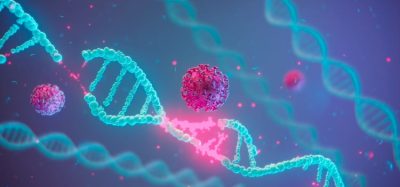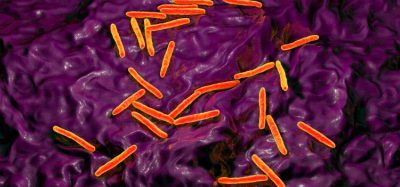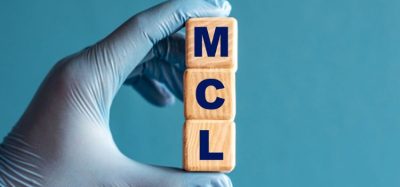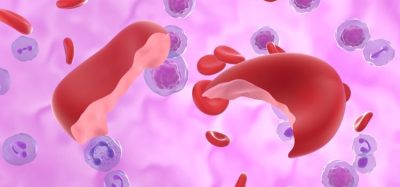Biosimilar uptake: a clinician’s perspective
Posted: 18 February 2021 | Nikki Withers (European Pharmaceutical Review) | No comments yet
To ensure that clinicians buy into biosimilars, it is important that they understand how products are analysed and compared to the originator molecules. Dr Fraser Cummings and Jonathan Sweeting discussed this issue at a recent virtual roundtable event, where they highlighted the complexities of biosimilar development pathways and approval processes. Here, Nikki Withers shares the key points raised during the live session.


Speaking at a virtual roundtable session, hosted by Samsung Bioepis, Cummings explained that compared to small molecules, such as aspirin, which are relatively simple, stable and easy to manufacture, biologics are large, complex molecules that are manufactured in living cells or organisms. “While it is possible to produce identical copies of small molecules, it is impossible to produce identical copies of biologics or fully characterise the molecular composition. They are also extremely sensitive to external conditions,” he said. Prior to the ‘biologics revolution’, Cummings would typically use steroids to treat his patients with inflammatory conditions, which was often costly in terms of side effects, long‑term morbidity and, in some cases, mortality. “The treatment landscape was substantially worse for patients compared to where we are now.”
I only started to buy into biosimilars when I really understood how they were being analysed and compared to the originator molecules
As biologic patents expire, drug developers have begun developing biosimilars – medicines that are similar to existing, government-approved, originator biologic medicines – that make these therapies cheaper and more broadly available. However, Cummings raised concern that many clinicians are not adequately educated about biosimilars, which could potentially impact their uptake. “With advanced analytical techniques, manufacturers can produce molecules that functionally are virtually identical to the originator molecules,” he said, noting that they must show no clinically meaningful differences from reference biologics with regard to quality, efficacy and safety. “Before biosimilars came along, most clinicians assumed that the biological drug they gave to patients was essentially the same all the time. There needs to be education so that clinicians understand the basic science and the analysis that supports the licensing of biosimilars, such that they can be viewed as being safe and effective in treating our patients.”
Jonathan Sweeting, Head of Europe at Samsung Bioepis, is well versed in biosimilar development; the company has a rich development pipeline, including five approved biosimilars already on the market for immunology and oncology indications. “Our primary focus is ensuring the highest levels of quality as well as continuity of supply of our products into the market. We have a robust quality control system in place, which is based on quality by design principles. This is an approach aimed at ensuring quality at every stage through design, development and manufacturing. All sources of variability affecting a particular step of the manufacturing process are identified, explained and then managed.”
Biosimilar development pathways
The level of evidence required for biosimilar approval is different to that of originator biologics, which can take years of development and regulatory processes. For standard biologics, a molecule of interest is usually identified in the lab from basic scientific research before undergoing various stages of clinical testing, which is extremely time consuming and expensive. “If you look at the cost of bringing a biological molecule through in different indications, you usually have to conduct a disease-specific phase screening study at a cost of many millions of pounds or euros,” said Cummings. “With biosimilars, most of the work is done in the laboratory in terms of understanding the molecules and learning from the originator molecule, such that the regulatory process is much quicker and simpler, at least on paper.” When demonstrating biosimilarity, there is still a huge number of aspects to be considered, such as safety, immunogenicity, pharmacokinetics/pharmacodynamics (PK/PD) and efficacy, which requires an extensive evidence base.
Quality comparability
The first stage is to ensure quality comparability, which Cummings believes is of critical importance. “As a clinician, I only started to buy into biosimilars when I really understood how they were being analysed and compared to the originator molecules.” The process of quality comparability establishes whether the physicochemical properties and biological activity are sufficiently similar to the originator. The biosimilar must also be highly similar at a molecular level, and impurities, biological activity and post-translational modifications need to be comparable. The degree of quality similarity will determine the scope and breadth of non-clinical and clinical data required to rule out differences in clinical performance.
Non-clinical comparability
In terms of non-clinical comparability, this stage establishes that the proposed biosimilar is functionally similar. “The biosimilar must display highly similar functionality to the reference product and multiple in vitro assays are used to compare the biosimilar with the originator molecule,” explained Cummings. He added that it is important to remember that the originator molecule may have changed since it was first licensed.
PK/PD comparability
PK/PD comparability establishes that the biodistribution of the proposed biosimilar is similar. “Comparative PK and/or PD studies in humans are designed to further support comparability data or to detect potential differences. These studies are important to ensure there are no unexpected adverse events or side effects, and to ensure that the biosimilar molecule is behaving in the same way as the originator molecule in patients,” said Cummings.
Clinical comparability
As mentioned earlier, it is impossible to make an exact copy of an originator molecule and therefore clinical comparability complements and confirms comparability, as demonstrated in the previous steps through set thresholds of variation. These are used to confirm that structural concordance translates into clinical performance. The biosimilar is only approved if there are no clinically meaningful differences from the reference. “It could be argued that Phase III studies have added very little to the development of a biosimilar molecule, other than providing reassurance for clinicians that within a given indication the molecule is working in the same way,” said Cummings. “From our perspective, immunogenicity is an important driver for adverse events in clinical use of these drugs and for me this is one of the reassuring aspects of the Phase III studies.”
Our primary focus is ensuring the highest levels of quality as well as continuity of supply of our products into the market
Of note, for biosimilar approval you need only produce evidence that the product behaves as expected in a single indication, whereas the company that produced the reference product must conduct Phase III studies for every potential indication for the given molecule. “With biosimilar development, the concept of extrapolation is applied,” explained Cummings. “The licensing authorities will allow use of a biosimilar molecule across all the different indications that the originator molecule was licensed for.”
Supply continuity
Following biosimilar approval, ensuring continuity of supply into the market is key; an aspect that Sweeting says Samsung Bioepis takes pride in. “We adopt a dual sourcing approach through our manufacturing processes to have primary and secondary manufacturing sites in place at every step of the drug substance, product and final production process. We also have extremely sophisticated inventory management processes in place, covering variances in production yield and strategic and operational safety stock to ensure that we can provide supply continuity, while also responding to in-market fluctuations and demand for the products.” He added that over the last year, during the pandemic, this has been increasingly important: “We have tried to maintain access to medicines and the ability to treat patients effectively with our medicines.”
A problem of choice
Cummings noted that one of the main challenges he faces is comprehending the number of biosimilars being produced. “For example, there are potentially five different infliximab molecules now available to me as a clinician in the UK. The regulatory process compares the originator molecule with the given biosimilar, but what it does not do is provide biosimilar to biosimilar comparability and similarity, which I think is concerning. Equally, the analytics and basic science applied to these molecules reassures me, but that is not to say there are no unexpected differences between these molecules.”
Finally, Cummings confirmed that clinicians have a lot of confidence in terms of the safety and side‑effect profiles of these biosimilar molecules. “One of the exceptionally important things with biosimilars is that they help to keep a cap on total budgets for caring for patients.”


Dr Cummings is a busy consultant gastroenterologist at Southampton General Hospital doing a mix of ward work, outpatients, endoscopy and research. Dr Cummings looks after general gastroenterology patients and has a sub-specialty interest in inflammatory bowel disease (IBD). He spent five years developing this clinical and research interest at the John Radcliffe Hospital, Oxford, prior to starting work in Southampton.


Jonathan is the head of European Operation at Samsung Bioepis and is responsible for overseeing the European organisation across commercial, medical, regulatory, quality and clinical activity. Prior to joining Samsung Bioepis, Jonathan served as the head of the Global Respiratory Franchise at GSK and was responsible for the commercial input into all business development opportunities and internal products in mid- to late-stage clinical development in the cardiovascular, diabetes and gastrointestinal therapy areas at AstraZeneca. He holds an MBA from INSEAD in France and a first-class MA from Cambridge University in the UK.
Issue
Related topics
Biologics, Biopharmaceuticals, Biosimilars, Clinical Development, Drug Development, Regulation & Legislation, Therapeutics








